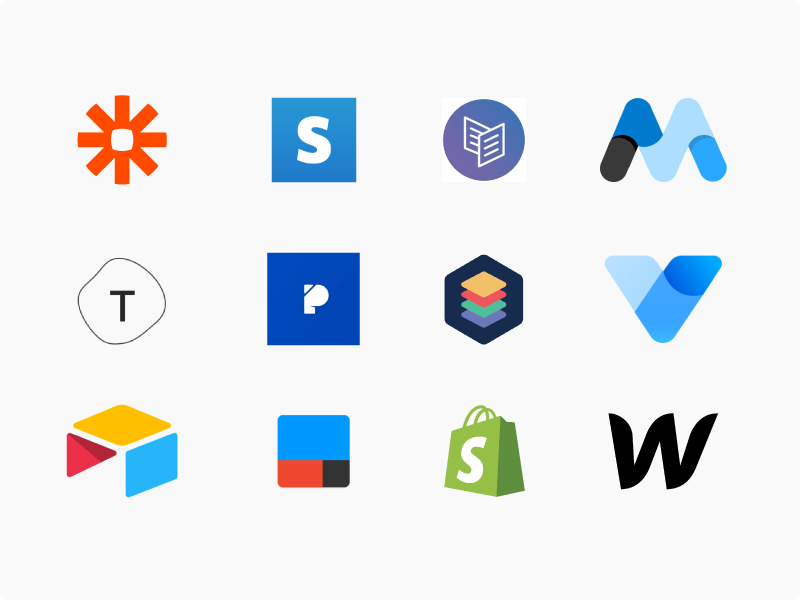Discover Exactly How Scalable Databases Can Be Made Use Of Without Coding to Improve Your Business Workflow
In today's busy organization atmosphere, the ability to take care of and evaluate data successfully is paramount. no-code. Scalable databases, specifically when paired with no-code services, supply a transformative technique that encourages non-technical users to streamline procedures.
Comprehending Scalable Data Sources
Scalable databases are necessary for contemporary service operations, permitting organizations to effectively manage increasing volumes of information without sacrificing performance. These data sources are made to adapt and grow to the altering demands of an organization, guaranteeing that they can handle larger datasets and even more complex queries as organizational requirements advance.
Understanding scalable data sources includes recognizing their two key types: vertical scaling and horizontal scaling. Vertical scaling, or "scaling up," involves adding even more power (CPU, RAM) to an existing server to enhance performance. Alternatively, straight scaling, or "scaling out," requires including much more servers to disperse the load, which commonly causes better versatility and mistake tolerance.
One more essential element is the architecture of scalable databases, which can be either relational or non-relational. Relational data sources, such as MySQL and PostgreSQL, are structured and utilize SQL for inquiries, while non-relational databases, like MongoDB and Cassandra, provide more flexibility with unstructured information.
Eventually, recognizing scalable databases is vital for services intending to leverage data as a calculated property, enabling them to remain competitive in a progressively data-driven setting.

Advantages of No-Code Solutions
Unlocking the potential of no-code remedies empowers companies to simplify operations and enhance productivity without the requirement for comprehensive programming understanding. These platforms enable non-technical customers to produce, customize, and manage databases easily, hence equalizing accessibility to modern technology across teams.
Among the main benefits of no-code solutions is their speed of execution. Organizations can quickly deploy applications and automate processes, dramatically reducing the time spent on development cycles. This agility enables organizations to respond quickly to market adjustments and consumer demands, fostering a competitive edge.
Furthermore, no-code platforms decrease reliance on IT departments for daily jobs, permitting technological teams to concentrate on more complex tasks that require specialized abilities. This shift not only enhances source allocation yet likewise advertises development within the company.
Cost-effectiveness is one more advantage, as no-code options can lower advancement and maintenance expenditures. By decreasing the requirement for coding know-how, firms can harness the capabilities of their existing labor force without the expenses of working with additional employees.
Popular No-Code Database Tools
The rise of no-code remedies has actually caused the introduction of different database devices that accommodate companies seeking performance and accessibility. These tools empower individuals with minimal technical know-how to create, handle, and control data sources flawlessly.
Caspio sticks out for its capacity to build web applications with no coding. It allows services to develop durable data sources and release applications swiftly, dealing with various sector demands. In a similar way, Propensity uses easy to use interfaces and powerful data administration abilities, allowing organizations to construct custom-made applications tailored to their workflows.

Use Instances in Organization Procedures
Exactly how can services take advantage of database devices to boost their procedures? Scalable databases offer organizations with powerful capacities to take care of and assess information without the requirement for comprehensive coding understanding. These tools can streamline various service procedures, ultimately resulting in improved effectiveness and efficiency.
One famous usage situation is customer partnership monitoring (CRM) Organizations can utilize scalable databases to track customer communications, choices, and responses, enabling individualized interaction and better service. By centralizing this information, teams can team up extra properly and respond to customer needs in real-time.
An additional substantial application is stock monitoring. Firms can use no-code data source tools to check stock degrees, track shipments, and projection demand. This makes certain optimal supply levels, reduces waste, and lessens stockouts.
Additionally, task administration can gain from scalable data sources by enabling teams to manage jobs, due dates, and sources in a merged platform. With real-time updates and information visualization, job managers can make educated decisions.
Getting Going With Execution
Implementing scalable data sources in business operations needs a structured method to ensure effective integration and use. The first step is to perform a complete requirements analysis, determining details business requirements, data types, and anticipated development patterns. This foundational understanding will certainly direct the choice of the proper data source remedy.
Following, pick an easy to use, no-code data source system that straightens with your functional objectives. no-code. Several modern-day remedies supply intuitive interfaces, allowing non-technical users to manage data efficiently. After picking a system, develop a clear information style that lays out just how information will certainly be arranged, accessed, and kept
Training is crucial; guarantee that employee are geared up with the required abilities to utilize the data source. Take into consideration giving tutorials or workshops to acquaint personnel with the system's performances.
Final Thought
In conclusion, the assimilation of scalable databases via see this page no-code options presents substantial advantages for organization procedures. Inevitably, leveraging these technologies can lead to enhanced efficiency and functional efficiency, placing businesses for continual development in a competitive landscape.
One prominent no-code data Learn More source tool is Airtable, which integrates the capability of a spreadsheet with the power of a data source.Exactly how can organizations take advantage of database tools to enhance their procedures? Services can utilize scalable databases to track client interactions, choices, and feedback, allowing customized interaction and better service.Carrying out scalable data sources in business operations requires an organized strategy to ensure successful assimilation and utilization.In verdict, the combination of scalable data sources through no-code options presents considerable benefits for business procedures.